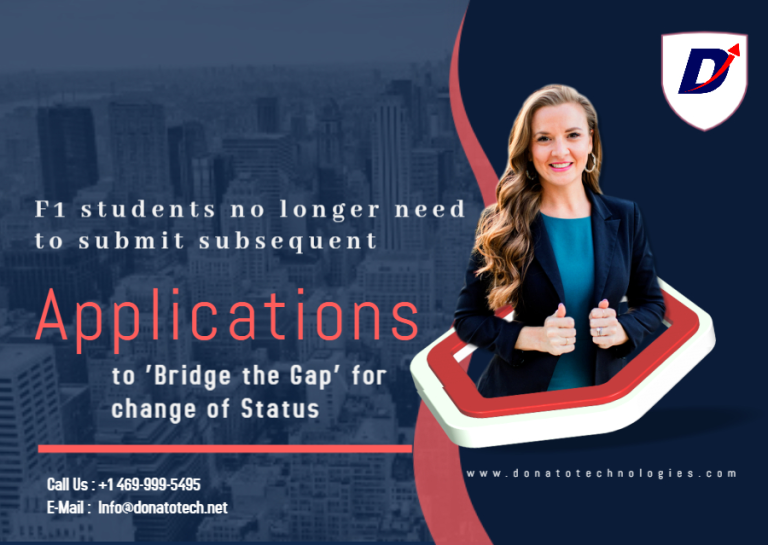U.S. Citizenship and Immigration Services announced new policy guidance that eliminates the need for individuals who have applied for a change of status (COS) to F-1 students to apply to change or extend their Non-immigrant status while their initial F-1 COS application is pending.
- Applicants who file for a change of status (COS) application to F-1 student status must maintain their status until the application is approved.
- Very often the change of status application would take months to process and approve, forcing students to miss their program start dates.
- USCIS also requires that the applicants must file multiple changes of status applicants to “bridge the gap” of their status up until the point that their F-1 status was approved.
- This has caused confusion and inconvenience for the student applicants.Under the previous policy, applicants needed to maintain status up to 30 days before the program start date listed on their Form I-20, Certificate for Eligibility for Non-immigrant Student Status, which required them to file extensions, or an initial COS and subsequent extensions ensuring that they would not have a “gap” in status.
- To prevent a “gap” in status, USCIS will grant the change of status to F-1 effective the day they approve an applicant’s Form I-539, Application to Extend/Change Non-immigrant Status.
- If they approve an application more than 30 days before the student’s program start date, the student must ensure they do not violate their F-1 status during that time.
- An example of a violation would be engaging in employment, including on-campus employment, more than 30 days before the program start date as listed on their Form I-20.
When the initial change of status application to F-1 is approved, the new status will be effective immediately.This new policy will greatly help foreign students to study in the U.S. Foreign students must bear in mind that they must still file their change of status applications before their legal non-immigrant status expires. It is also required that they must ensure that they continue to be eligible for the new status requested.The new policy will reduce workloads and costs for both the applicants and USCIS. It is said that USCIS is in the process of revising the Form I-539 instructions to reflect these changes.


